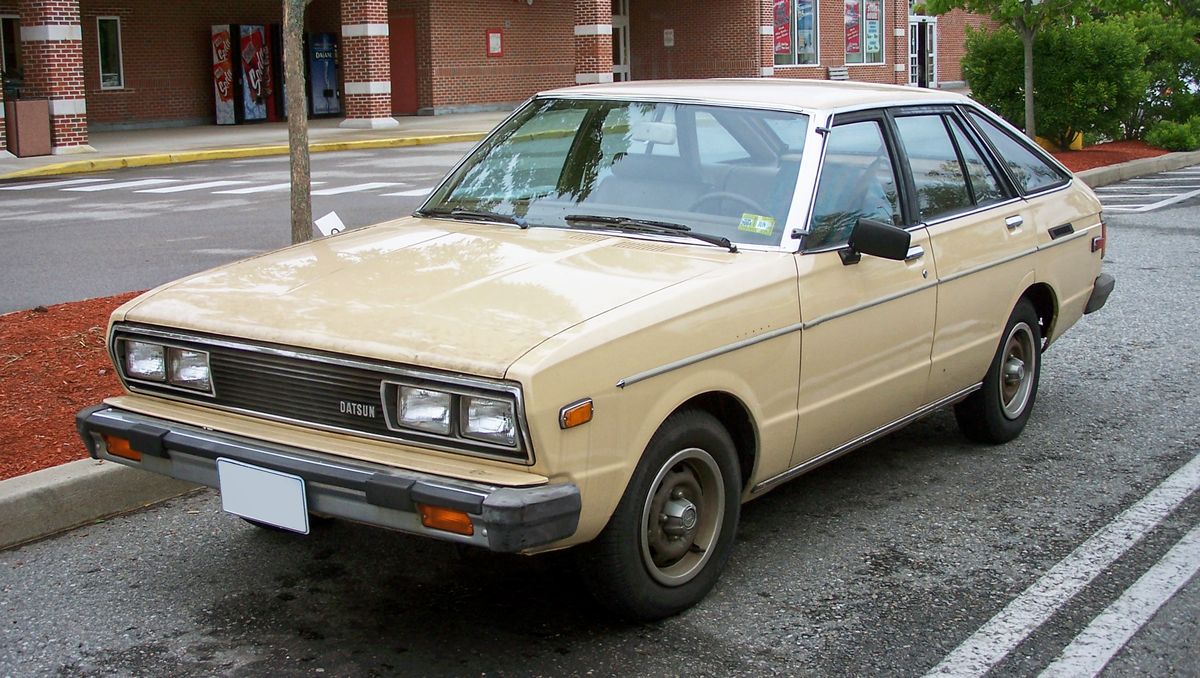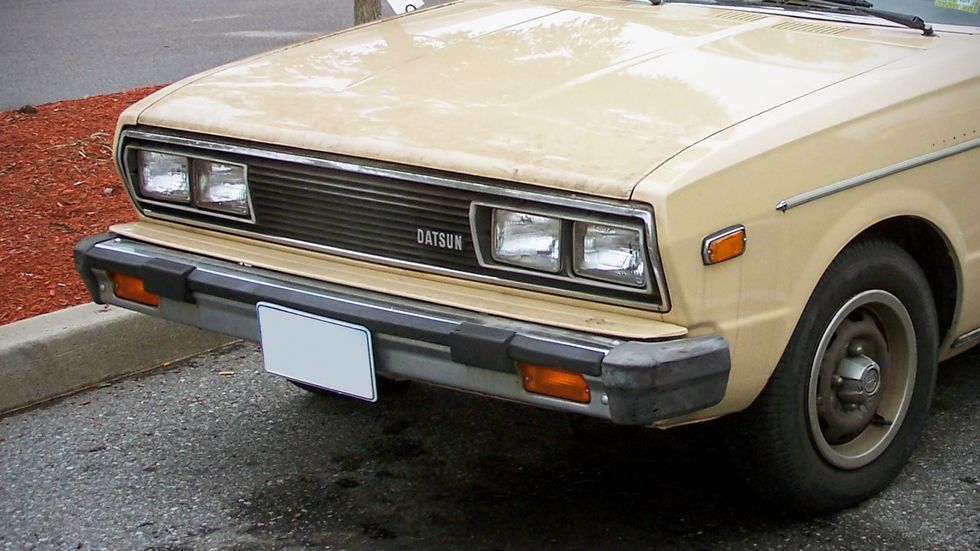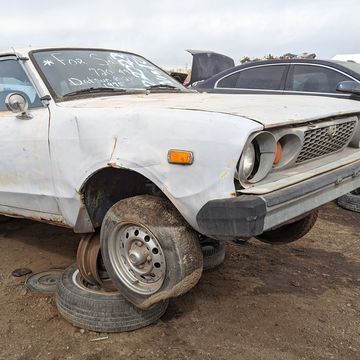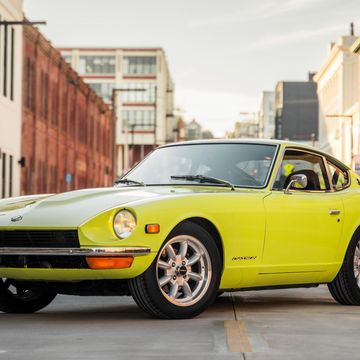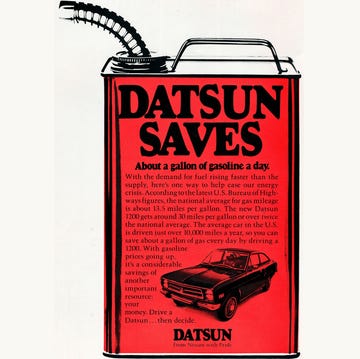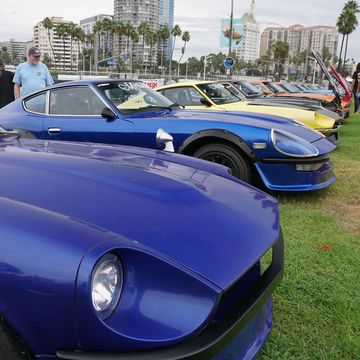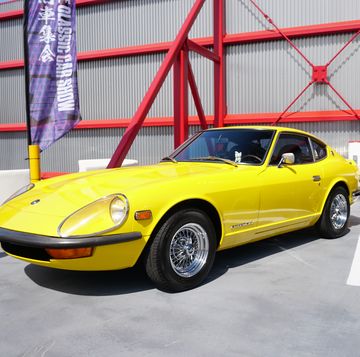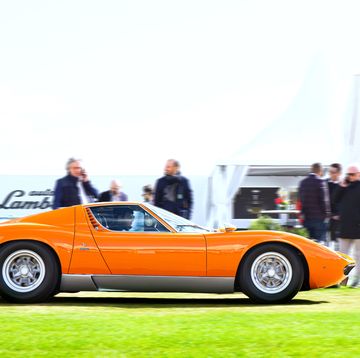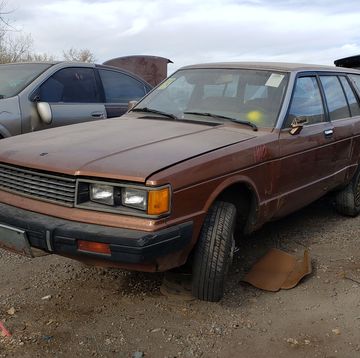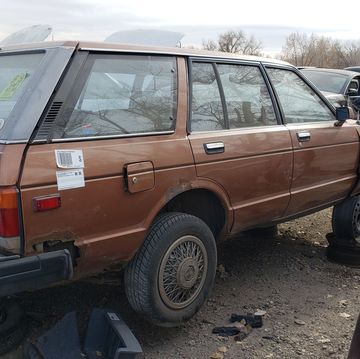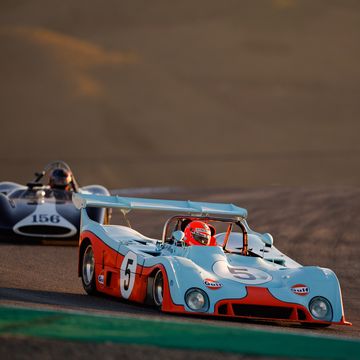It's still difficult to believe that within the span of the past decade Nissan resurrected the Datsun brand to great fanfare, only to close it down just a little over a year ago. If we hadn't attended one of the model debuts in Japan in the mid-2010s, the premise might seem like a fever dream—and it still does—as North America was not one of the regions that received the relaunched lineup.
But look hard enough, and there is still evidence of Datsun's presence in the US in the not so distant past. And we're not talking about just the Z cars.
The Datsun 510 might be more familiar to your eyes with round headlights, but in its later years the long-running model wore rectangular specs, lending it a slightly more modern appearance. But these latter-day 510s were actually 1977-1981 Nissan Violets sold under a variety of names in various markets, including as the Stanza, but kept the Datsun 510 badging stateside.
As such, they're quite distinct from the original (and far more popular) 1968-1973 models, hailing rather from the depths of the Malaise era.
Powered by the Z20 engine producing 88 hp, this 510 likely hails from the 1981 model year, available in several bodystyles including a "four-door hatchback," as Datsun called it at the time. Also, 1981 happened to be the last model year, before the Nissan Stanza arrived to pick up the baton.
What did the 510 offer Malaise-weary buyers in its last few years?
The astounding economy of a 2.0-liter NAPS-Z engine with 29 mpg combined, according to the EPA.
"This astounding engine is so revolutionary in concept, so timely in application that it has the potential to save American motorists eight million gallons of gasoline in just one year," ad copy of the time promised.
"The heart of the NAPS-Z (Nissan Anti-Pollution System) engine is a high-performance 'hemi' combustion chamber with two spark plugs per cylinder and a 'fast-burn' design. This configuration allows the engine to burn fuel more completely. It gets the most out of every gallon, while leaving fewer unburned wastes in the exhaust."
Four- and five-speed manuals were on the menu to channel all that power to the rear wheels, but the three-speed automatic was perhaps more appropriate for the era, to get the full late 70s' experience.
Other advertised features included rear and side window defoggers, reclining front bucket seats, steering column stalk controls for lights and wipers, and power-assisted front disc brakes. But if you wanted to shop through the 1981 catalog for Datsun accessories, you could get a few more goodies, including the most 1981 accessory ever: a CB radio.
Ultimately, this is one of those cars that survived in the west in some numbers, especially California, well into the 1990s. But it is scarcely seen elsewhere, especially in the salt-encrusted northeast where we spotted this example. And we're pretty sure we're not going to see another one here (unless it's this same one) as the days of these machines being spotted in traffic are entirely in the rear view mirror.
Did you know anyone who had a Datsun 510 back in the day? Let us know in the comments below.

Jay Ramey grew up around very strange European cars, and instead of seeking out something reliable and comfortable for his own personal use he has been drawn to the more adventurous side of the dependability spectrum. Despite being followed around by French cars for the past decade, he has somehow been able to avoid Citroën ownership, judging them too commonplace, and is currently looking at cars from the former Czechoslovakia. Jay has been with Autoweek since 2013.
